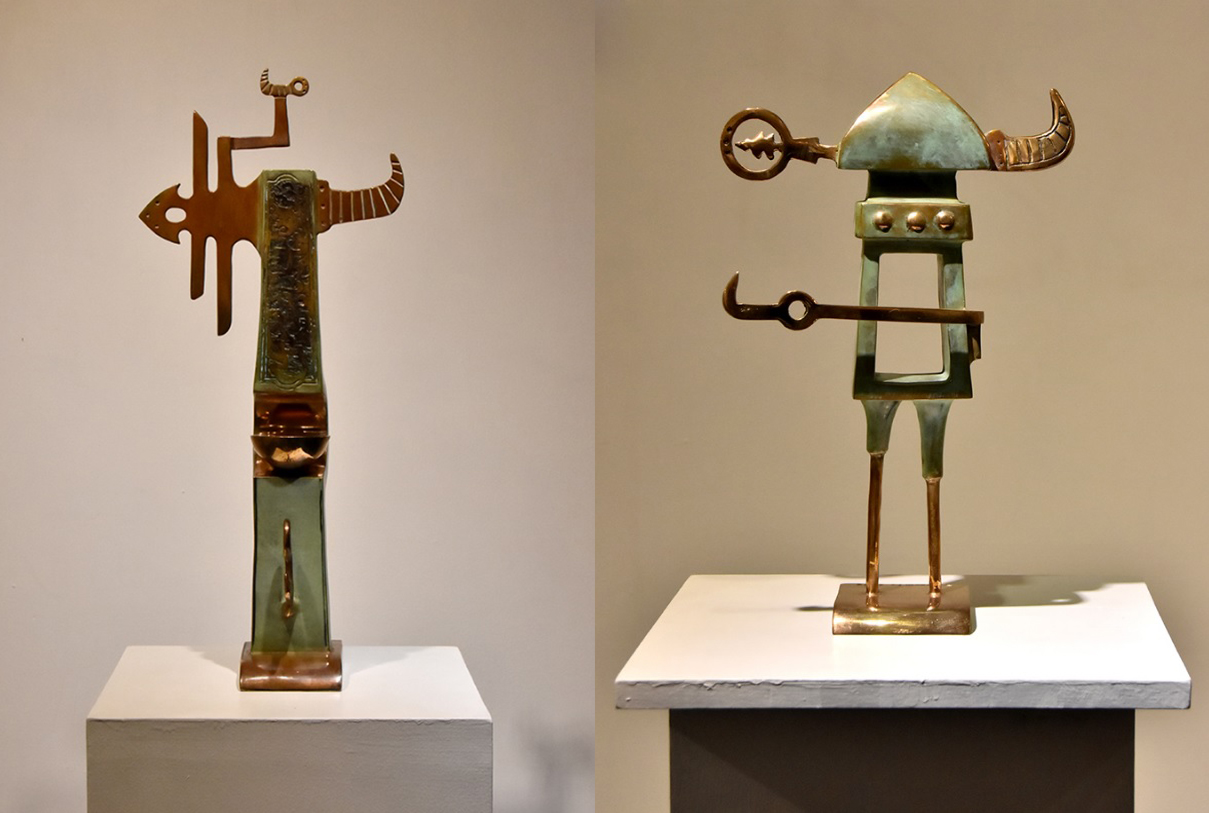Seyhoun Art Gallery in Tehran is playing host to a solo abstract sculpture exhibition of Iranian artist Sadeq Ad'ham.
Titled 'Accolade', the event is showcasing Ad'ham's collection of bronze sculptures based on one of the tales in Shahnameh (The Great Book), the epic poem written by celebrated Persian poet Ferdowsi (940-1020).
Composed of nearly 60,000 verses, Shahnameh mainly tells the mythical and to some extent historical events of the Persian Empire from the creation of the world until the Islamic conquest of Persia in the 7th century. For over 1,000 years, it has remained one of the most popular works in the Persian-speaking world.
"I always wanted to bring up Persian ancient literature in my works because I did not like it when some artists used works of other nations as their source of inspiration and turned a blind eye to our own culture, " Honaronline reported Ad'ham as saying.
In his collection, Ad'ham has focused on the tragic tale of two legendary heroes of the book, Rostam and his son Sohrab.
"I employed different symbols and icons to portray my own subjective image of the story's characters," he said.
To create the sculptures, the artist read the story several times to help him get a better and clearer image of the characters.
"I have used squares and rectangles, the simplest and also the purest geometric shapes, in forming the figures," he said.
Rostam was unaware that he had a son by Princess Tahmina as he had not seen his wife for many years. After years, Rostam and Sohrab face each other in a battle, fighting on opposing sides. They fought in single combat and Rostam wrestled Sohrab to the ground, stabbing him fatally.
Elaborating on the similarity of his works to Saqqakhana School of Art, he said, "I wanted my works to be close to the works of this school of art because I was using an ancient epic poetry as my inspiration."
The Persian word 'saqqakhana' literally means a place with public water faucets, which refers to a contemporary art movement in Iran, which started in 1962. It was initially associated with the works of artists, both paintings and sculptures, that used elements from votive Shia art in their modern work. It gradually came to be applied more widely to artworks that used traditional decorative elements.
The gallery is located at No. 11, Fourth St., Vozara Avenue.


